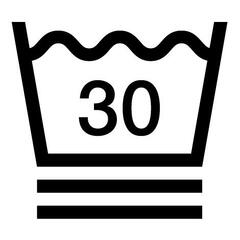WHO DID WE COLLABORATE WITH TO DEVELOP THIS BABY CARRIER?
At Quechua we have the technical know-how on backpacks.
To grow our expertise and develop this baby carrier, we joined forces with experts in the physiology of young kids:
A babywearing instructor
A mid-wife
A physiotherapist
An osteopath
Thanks to their participation and our community of adventurer parents, we were able to validate an ergonomic position label together with our R&D centre to guarantee comfort for you and your kid.
SAFETY (STANDARD)
NF validation complies with safety requirements: NF EN 13209-2:
flexible baby carrier
On first use, we recommend that someone help you put it on or you do it in a secure area.
We opted to use a 2-point belt clasp so you can open it with just one hand.
There is safety back-up in case it is incorrectly closed (listen for the CLICK when you close it) with an elastic strap underneath.
INSTRUCTIONS
Read the instructions carefully before using for the first time.
Do not hesitate to consult our video tutorials produced by a carrying instructor (QR code on the box)
WHAT IS PHYSIOLOGICAL CARRYING?
Above all, it’s time to share with your kid that is beneficial in their development, that respects:
.The baby’s position and body shape as well as that of the parent.
.The physical (no risk of falling) and respiratory (the head isn’t too huddled up against the parent) safety
- The baby and parent’s comfort
- The baby's development (according to its motor development, age, size, etc.)
And above all, a means of all-terrain movement from as young an age as possible.
2 PHYSIOLOGICAL CARRY POSITIONS
Our baby carrier has 2 ergonomic positions validated by our health experts:
.On the front facing yourself, from 9 months upwards or when your baby knows how to sit up on their own (following the natural distance between hips).
.On the back, from the time when their weight could upset your balance and up to 15 kg (standardised).
As recommended by our partner babywearing instructor, we have stopped the “face the world” position as it's not physiological and therefore not advised for young kids.
HOW TO CORRECTLY POSITION YOUR KID?
ERGONOMIC POSTURE
- Their knees are bent to the same height as their buttocks at a minimum
- Their pelvis is tilted and lines up with their shoulders.
- Their back is slightly rounded (avoid huddling the head to close against the parent)
- Their head is turned to the side to clear the respiratory tract.
- The baby is positioned at “kissing height”: to do this, the belt isn't fitted on the hips but rather at the necessary height to be able to kiss their forehead just by lowering the head
EASY TO ADJUST
We have tried to reduce the number of adjustments to simplify using our model as much as possible:
- 1 strap to adjust the belt (with detachable foam reinforcement for the strap if uncomfortable).
- 1 strap to adjust each of the 2 straps
- 2 hooks and foldable headrest to adjust the carrier height (which should come to the back of your kid’s neck when they are small)
- a back/chest strap to connect the 2 straps
- 2 “thumb rest” buckles
SMART STORAGE
For walking independently with your kid without having to take a bag, we have designed our model with:
- 1 large pocket with seal for nappies / wipes / small snack and a hook to secure your keys
- 1 elasticated top pocket to slip in your kid’s hat for example
- 1 flask/feeding bottle holder
- 1 phone pocket
A clever little extra: 2 Removable bibs (cotton on the outside/waterproof inside) for when baby chews the straps, easy to wash.
WHERE DO OUR BABY CARRIERS COME FROM?
Designed at our international design centre at the foot of Mont Blanc in France, this baby carrier is then manufactured by our suppliers in Vietnam and China.
These are partners that have genuine expertise in making baby carriers and with whom we work closely.
Thanks to this relationship of trust with our industrial partners, we can create high-quality technical products.




